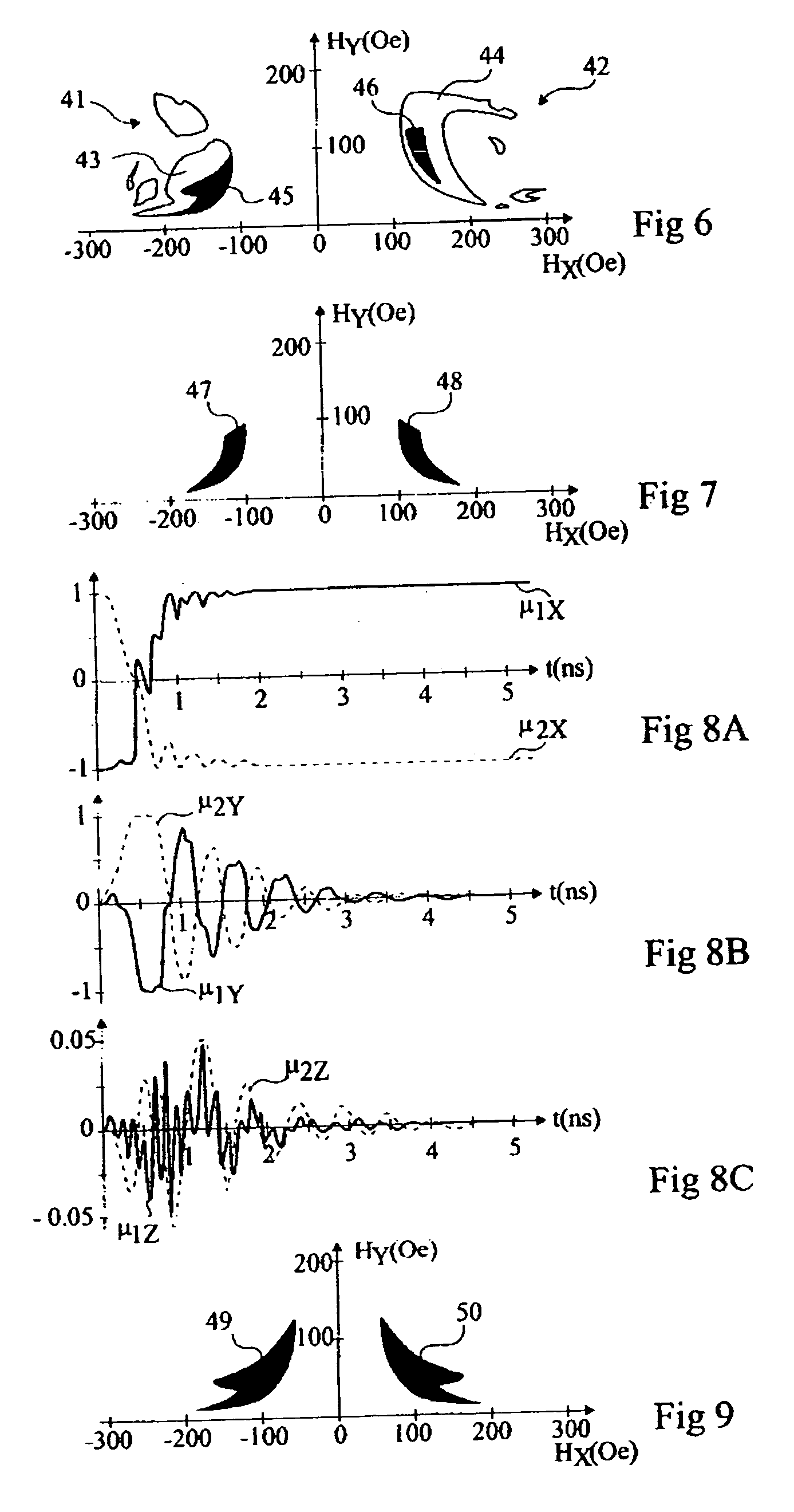MRAM element
a random access and memory element technology, applied in information storage, static storage, digital storage, etc., can solve the problems of increasing memory density, increasing difficulty, and reducing process reliability, and achieve the effect of high density of memory cells
- Summary
- Abstract
- Description
- Claims
- Application Information
AI Technical Summary
Benefits of technology
Problems solved by technology
Method used
Image
Examples
Embodiment Construction
[0042] The applicant has determined, by many trials and simulations, that by providing a dissymmetry of certain magnetic properties of the ferromagnetic layers forming the free magnetic region of the memory element, it is possible to perform a direct writing into the memory element, even with a compensated structure, by using write magnetic fields of moderate amplitudes.
[0043] According to a first example of implementation of the write method according to the present invention, which will be described in further detail hereafter, it is desired to obtain a compensated or almost compensated magnetic region for which one of the following properties or the following two properties are different: [0044] the anisotropy fields of crystallographic origin; [0045] the demagnetizing field tensors.
[0046]“Demagnetizing field tensor” is used to designate the tensor having its matrix product with the direction cosines of the magnetization of the ferromagnetic layer providing the demagnetizing fi...
PUM
 Login to View More
Login to View More Abstract
Description
Claims
Application Information
 Login to View More
Login to View More - R&D
- Intellectual Property
- Life Sciences
- Materials
- Tech Scout
- Unparalleled Data Quality
- Higher Quality Content
- 60% Fewer Hallucinations
Browse by: Latest US Patents, China's latest patents, Technical Efficacy Thesaurus, Application Domain, Technology Topic, Popular Technical Reports.
© 2025 PatSnap. All rights reserved.Legal|Privacy policy|Modern Slavery Act Transparency Statement|Sitemap|About US| Contact US: help@patsnap.com



